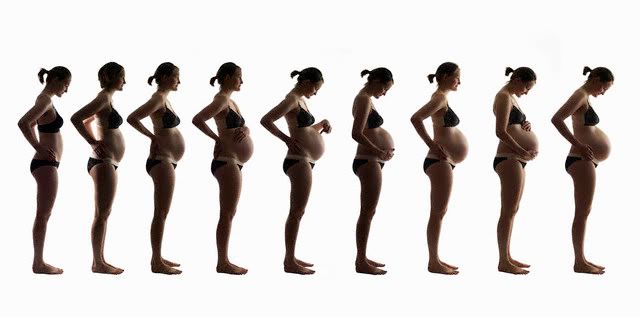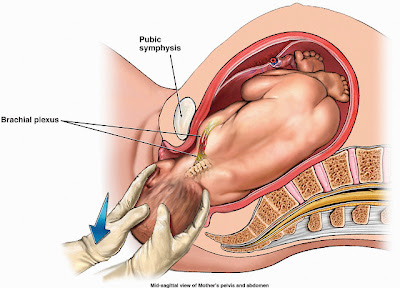31.7.09
30.7.09
27.7.09
25.7.09
24.7.09
23.7.09
22.7.09
Pregnant Belly Pictures Twins
Medical illustration of a twin pregnancy with an anterior or front cut-away view of the mother's abdomen and uterus. Two fetuses are present inside the uterus, one in a Frank breech presentation and the other in a transverse position.
21.7.09
20.7.09
19.7.09
Pregnancy Calendar
 Interactive Pregnancy Calendar
Interactive Pregnancy CalendarThe presence of early pregnancy symptoms is an indication that your spouse needs to undergo a pregnancy test. If positive, it means your spouse is on her way to give birth to your baby.
However, pregnancy-divided into three trimesters-remains a mysterious period for most women. And as for the men, most expectant dads go through these months without a slightest clue as to what is expected of them. Here is a pregnancy calendar to prepare you on what to expect from your spouse and how best to help her.
Pregnancy Calendar: First Trimester
What your spouse will experience:
The sudden hormonal rush during this phase may lead to a host of uncomfortable symptoms and sensations for your spouse. Nausea (commonly referred to as morning sickness) and an aversion for certain foods items may become apparent. Weakness or fatigue is another common symptom at this stage.
What you can do:
As the full import of the pregnancy starts to sink in, you can discuss the baby with your spouse. You could also accompany her during her visits to the obstetrician. Make use of this relatively relaxed period by spending quality time together, at home and outside.
Pregnancy Calendar: Second Trimester
What your spouse will experience:
The initial distressing symptoms such as nausea will now subside. However, your spouse's belly will continue to expand throughout this stage. This will restrict her movements considerably. Bleeding from the nose and gums, heartburn, indigestion, and the appearance of varicose veins or hemorrhoids are the other symptoms that she will have to bear with.
What you can do:
Her pregnancy will increasingly impede your spouse's capacity to live a normal life. You can help by taking over at least some of her domestic duties. This is also a good time to help her plan her pregnancy in detail.
Pregnancy Calendar: Third Trimester
What your spouse will experience:
The developing baby will make further demands on your spouse's body: her weight will continue to increase and may lead to back and hip pain. Swellings on the ankles and face may also be present. Besides, even mild exertion during this period may leave her gasping for breath.
What you can do:
In this final stage of pregnancy, your spouse may become increasingly housebound. Try to find ways to make her feel comfortable and keep her spirits high-an occasional gentle massage will be highly appreciated. This is also the time to finalize arrangements for the birth of your baby.
Paul Banas was looking for a business idea that would allow him the flexibility to spend time with his family. Paul Banas is a founder of GreatDad.com. He writes articles on father and daughter, parenting skills, family planning, pregnancy care and many more topics related to dads.
18.7.09
Pregnancy Questions
 Questions About Your First Pregnancy
Questions About Your First PregnancyIf you're expecting your first baby, you've got quite a few health-related questions and concerns. And with good reason--your body is going through a myriad of changes.
How Do I Know For Sure?
If you suspect you might be pregnant, there are a few clues you can look for. You may be spending a lot more time than usual in the restroom--frequent urination is an early sign of the changes the body undergoes during a pregnancy. Another telltale sign is the dreaded morning sickness. In the first trimester, many women feel nauseous after awakening and have trouble keeping food down. If you do suffer from morning sickness, relax--it usually diminishes by the 12th week.
When Do I Go to the Doctor?
If you take a drugstore pregnancy test and it turns out positive, you should make a doctor's appointment ASAP. Your doctor will probably prescribe prenatal vitamins to make sure you and your baby get everything you need to be healthy, and will check the baby to make sure everything is going the way it should. Typically you'll go in for a routine check every three to four weeks so the doctor can monitor your child's growth and development.
What Medications Do I Need to Avoid
The list of medicines off-limits to expectant mothers is rather extensive. Make sure to check with your doctor or pharmacist before you take anything, even if its over-the-counter. Even if the medicine doesn't come with a warning against use by pregnant women, every pregnancy is different and there may be a reason that you shouldn't use it.
What Should I Do if There's A Change in My Baby's Movement?
One of the most frightening things for a first-time mother is to realize that she hasn't felt her baby move in a while. It's normal for the baby to take a rest once a while they won’t kick and roll around continuously. But you'll become familiar with your unborn child's movement patterns, and if something seems off, it's better to be on the safe side and call your doctor. Don't brush off concerns as first pregnancy nerves often when you have a feeling that something isn't right there's a good reason.
You surely have countless further questions beyond these--and by all means, ask your doctor. That's what he or she is therefore. The above are some commonly asked questions to help you better understand the changes taking place inside your body over the next nine months.
Site offering free information detailing the very early signs of pregnancy.
17.7.09
Ultrasound Testing During Early Pregnancy
Medical illustration depicting a pelvic ultrasound test like that typically used during early pregnancy tests.
16.7.09
Intrauterine Infection During Pregnancy
Medical illustration of a birthing complication, showing an intrauterine infection during pregnancy. It features a cut-away view of a uterus with a fetus inside and a green color to represent the infection.
15.7.09
Oversized Full Term Fetus
Medical illustration of a pregnant female abdomen with an oversized full term fetus secondary to gestational diabetes, in a sagittal (cut-away, side) view.
14.7.09
Normal Anatomy of the Placenta
Normal Anatomy of the Placenta. Orientation of the fetus in utero in LOA position. Enlargement shows uterus lining with placental anatomy and umbilical cord. Labels show how gas exchange occurs between the mother and fetus.
13.7.09
Infant Shoulder Injury During Birth
Medical illustration showing the mechanism of shoulder dystocia, or brachial plexus injury, during a vaginal delivery. It shows a mid-sagittal view of the mother's pelvis and abdomen and the birth of a baby with its shoulder trapped by the pubic symphysis. The fetal head has been delivered but the one shoulder is stuck and cannot be delivered. The brachial plexus is highlighted in red to indicate the area of injury.
12.7.09
Narrow Pubic Arch Causing Birth Injury
Medical illustration showing how a narrow pubic arch in the mother's pelvis can result in head and shoulder injuries (dystocia) during labor and delivery of the baby.
11.7.09
Normal and Unusual Umbilical Cord Placement
Medical illustration contrasting a normal third trimester fetus in utero with one with abnormalities of the umbilical cord. Included fetal abnormalities are an unusually short cord and a nuchal cord, where the umbilical cord wraps around the fetus's neck.
9.7.09
Pregnancy Test
Medical illustration of the amniocentesis pregnancy test procedure showing needle aspiration of amniotic fluid from a pregnant uterus. Labeled structures include the placenta, fetus, uterus (womb), amniotic fluid, and cervix.
8.7.09
7.7.09
3.7.09
Subscribe to:
Posts (Atom)























